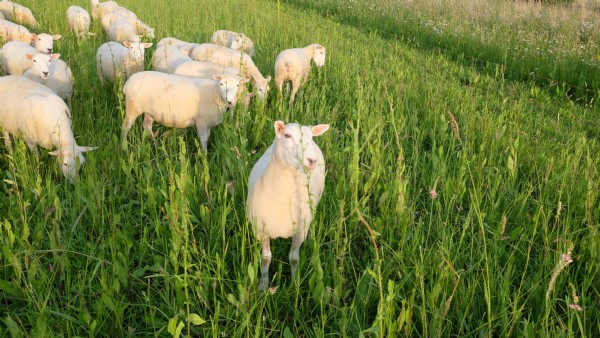

A herbal ley is a complex seed mixture of grasses, legumes and herbs, which bring a range of benefits to forage, livestock health and soil fertility. Herbal leys can often include a mixture of up to 17 species, depending on the aims of the ley, location and soil type.
Newman Turner, one of the great advocates of herbal leys, described these mixes as his ‘fertiliser merchant, food manufacturer and vet all in one’.
In mixes, grasses provide carbohydrates and clovers contribute protein. However, adding forage herbs such as chicory, ribgrass and burnet improves the quantities of vital minerals in the forage which helps increase daily liveweight gains and milk production. Just as vital is their ability to build soil fertility, withstand drought and promote biodiversity across whole fields.
Herbal Leys have traditionally been used to build soil fertility and structure in an arable rotation, acting as a minimal input, four year break crop, but they bring significant benefits not only to the soil health, but also to the health and diet of livestock and the wider environment.
The deep rooting species in the mixture add drought tolerance when grown on thin soils or during dry summers, remaining green and palatable for much longer than other forage mixtures.
They work especially well on dry, light land where ryegrass leys prone to burning up in mid summer. The mixture of species also ensures a longer growing season and certain species included in the mixtures such as Sainfoin, Chicory and Birdsfoot Trefoil, have anthelmintic properties, which helps to reduce the worm burden in livestock, creating less reliance on artificial wormers.
The deep rooting herbs, notably Chicory, mine the soil for important nutrients and minerals, making them available to the grazing livestock and lowering the need for bought in concentrates. The high legume content of these leys reduces the need for expensive artificial nitrogen, since they fix their own N, feeding the other grasses and herbs in the mixture, and again helping to reduce costs.
Finally growing a complex mixture of species can increase the overall yield of the forage. This is known as the ‘overyielding’ effect, created by different species growing in different spaces both above and below ground, throughout the growing season.Trials have proven that complex mixtures can outyield monocultures or simple mixtures even when they have received a nitrogen application.
Date Posted: 18th January 2018



